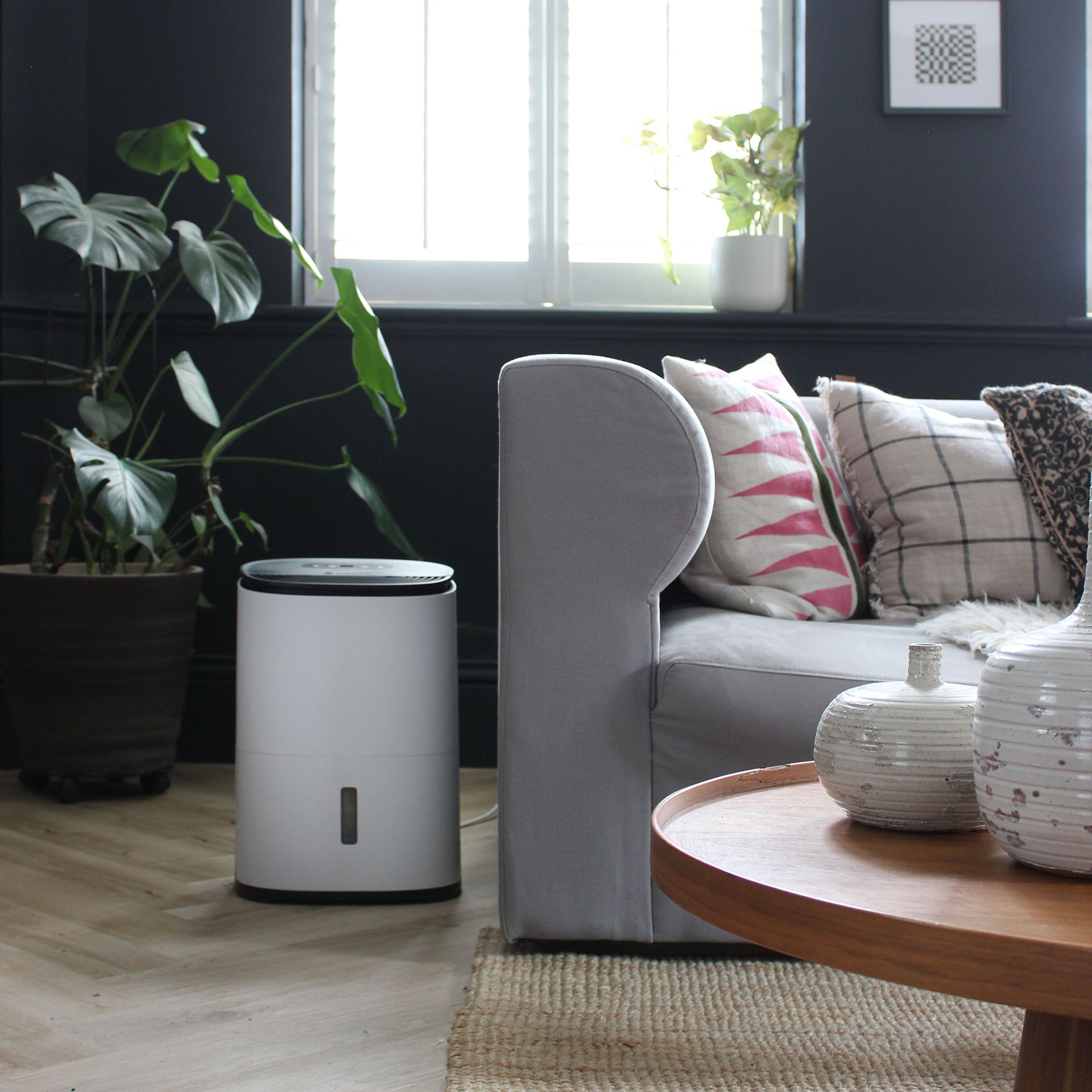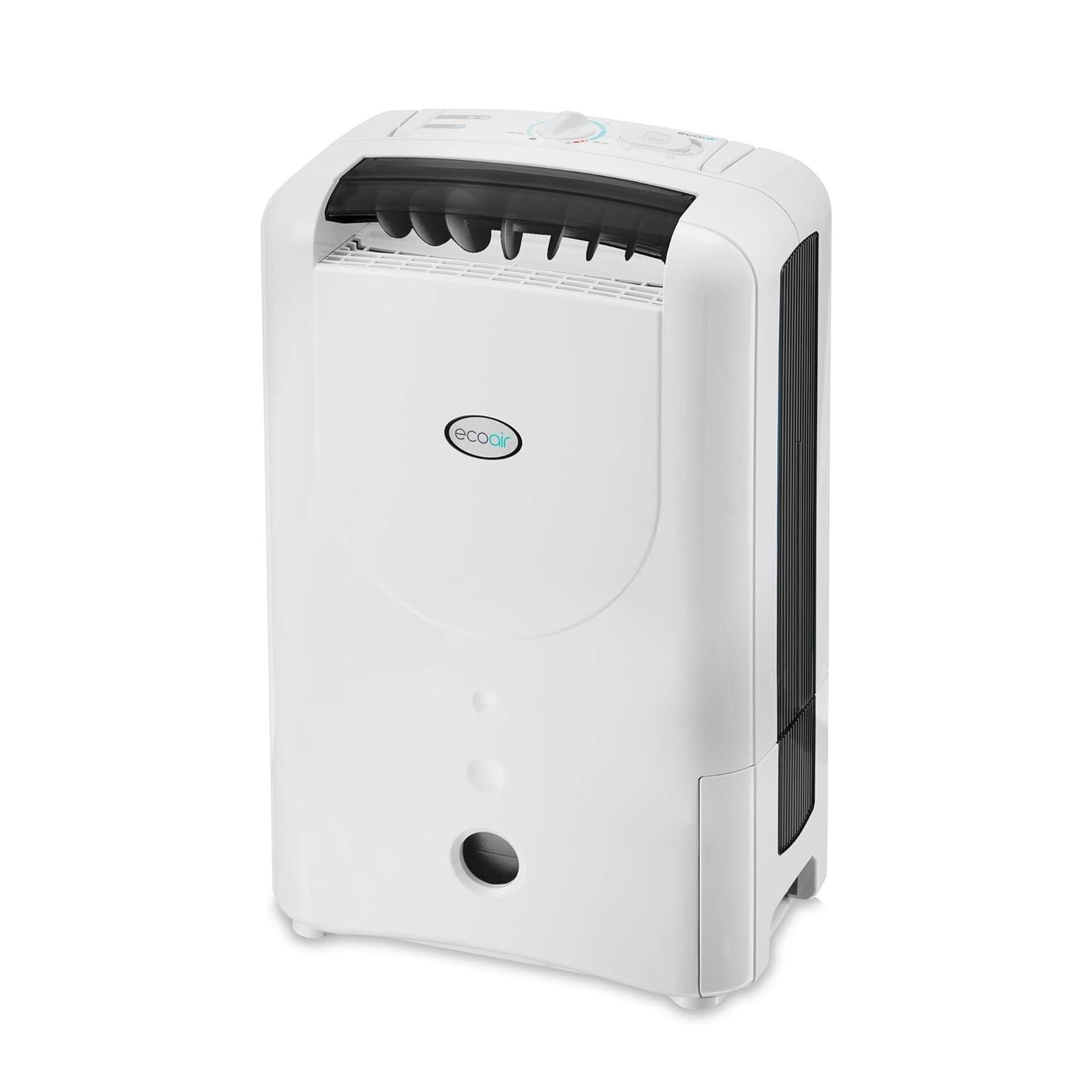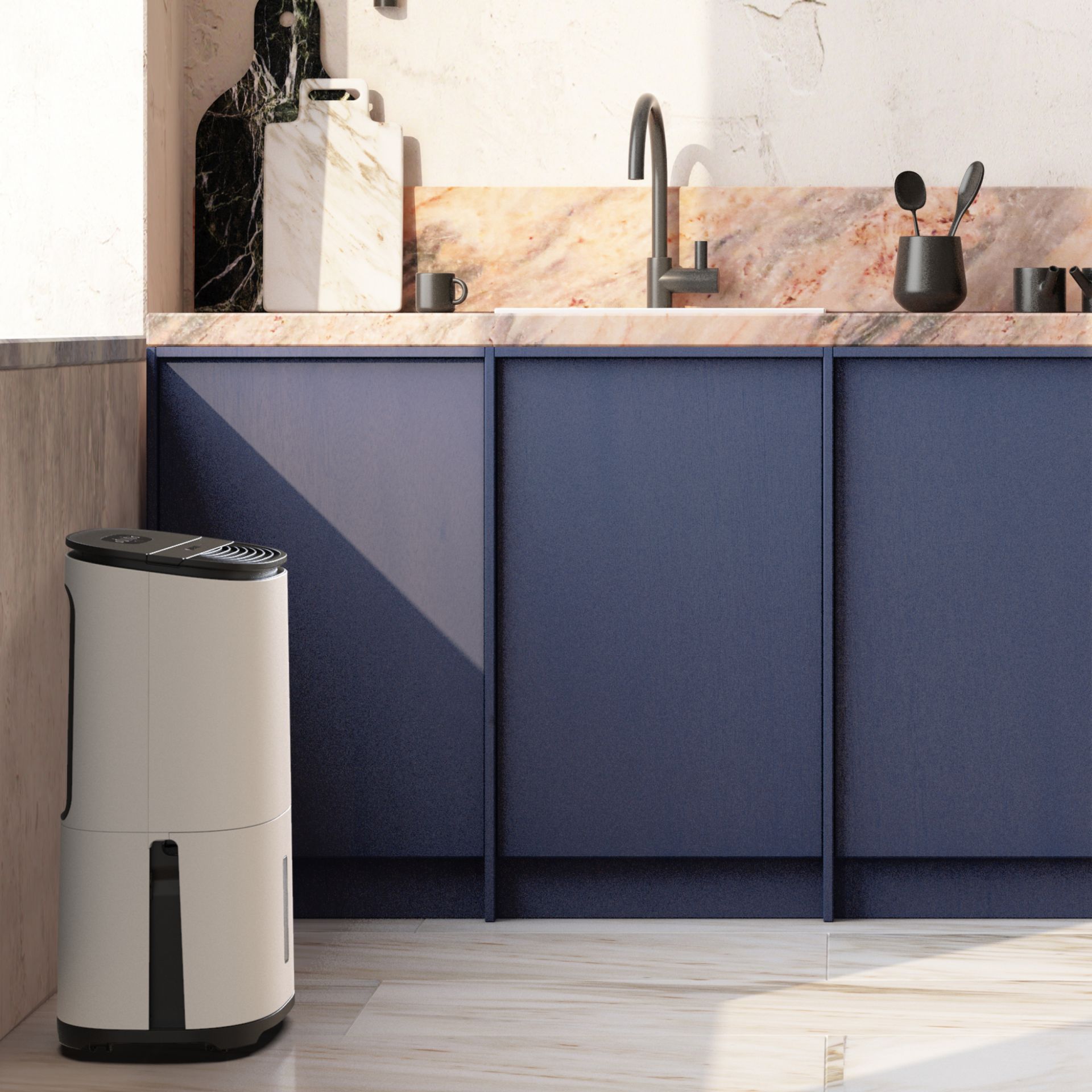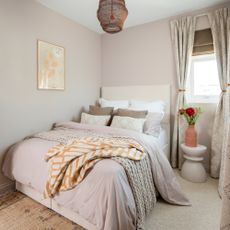10 common dehumidifier mistakes to avoid, according to the experts
Are you using your dehumidifier all wrong?

- 1. Putting it the wrong way round
- 2. Neglecting to clean or change the filter
- 3. Putting it in the wrong place
- 4. Assuming that drying clothes naturally is cheapest
- 5. Neglecting to empty the water reservoir
- 6. Not setting the humidistat correctly
- 7. Assuming they're expensive
- 9. Getting the wrong size for the job
- 10. Not doing your research before buying
- FAQs

This year, we've been looking for alternative ways to keep our homes warm and dry to cut costs. However, are we making dehumidifier mistakes in an attempt to avoid the tumble dryer?
We're big fans of avoiding turning the heating on purely to get our washing dry, but let's be honest, even the best dehumidifiers can be a bit of a mystery to many of us. We know that dehumidifiers extract excess moisture from the air in our homes to help us deal with damp and dry our clothes faster – but are we utilising them to their full potential?
With cold and wet weather on the horizon, we'll be turning on our dehumidifiers more frequently over the next few months. We turned to experts to find out the most common dehumidifier mistakes people often make, and how to avoid them.

10 dehumidifier mistakes – and how to avoid them
It's safe to say that dehumidifiers are certainly having a bit of a moment right now as a trusted way to save energy at home this winter. Even Martin Lewis has raved about the use of dehumidifiers to save money, so you definitely know that it's not an appliance to turn your nose up at.
But as with anything, it pays to be clued up on how to use one correctly so you can avoid falling victim to these common dehumidifier mistakes.
'If you haven't carried out your research, it's more than likely you'll believe that operating a dehumidifier successfully only requires it to be switched on,' starts James Longley, managing director at Utility Bidder. 'But this isn't the case and many owners of the appliance won't be experiencing the full extent of the benefits.'

Best dehumidifier overall
The best dehumidifier we've tested, the MeacoDry Arete One is quiet, easy to use, works superbly and is very energy-efficient compared to other compressor dehumidifiers. Plus, its Smart Laundry Mode is brilliant at drying wet washing indoors.

Best dehumidifier for drying clothes
Whilst we don't think it can quite beat the MeacoDry Arete One on overall performance, Pro Breeze's latest launch, the 20L Premium Dehumidifier with Special Laundry Mode, is the best dehumidifier for drying clothes that we've tested.

Best for unheated rooms
The EcoAir DD1 Simple MK3 can be operated in any space that's above 1°C, making it a great option for a garage, basement, conservatory or unheated room during the winter months – including a less than toasty utility room.
1. Putting it the wrong way round
If you're still perched on the age-old question, 'Do dehumidifiers dry clothes?', the answer is yes. You just have to position it accordingly.
If you're unsure whether you should position the dehumidifier so the air coming out of the machine gently moves the clothes, or have it the other way around with the filters facing the clothes, drawing the moisture out. Chris Michael, Managing Director at Meaco, says the first way is best for drying clothes quickly.
'Yes, position the dehumidifier next to the rack so that the dry air from the dehumidifier blows over the clothes,' he advises.

Chris founded leading dehumidifier manufacturer Meaco and has been advising on humidity solutions and dehumidifiers since 1991 and is well-known within the dehumidifier industry across the world as a leader in innovation and sustainability. With a wealth of experience in the industry, Chris is committed to helping provide low-energy and low-noise solutions appliances that improve the lives of customers.
2. Neglecting to clean or change the filter
'Many users don't change the filter in their dehumidifier frequently enough,' says Utility Bidder's James. Dehumidifiers pull the air through the space through their internals over and over again to dry the air. So, they also pull through anything else that is in the air, which includes pet hair, pet dander, and dust.
'Eventually, this will build up inside the dehumidifier and will clog it up. In these cases, always buy a compressor dehumidifier with a HEPA filter, and check that filter monthly,' says Chris from Meaco. You can clean the filter with a damp microfibre cloth, like this one at Amazon, to keep it healthy.
James also recommends you 'change the filter every few months, especially if it's in regular use' to help your dehumidifier last for years to come.

3. Putting it in the wrong place
'The most common mistake is probably the positioning of the dehumidifier,' says Marc Duckworth, product manager at Russell Hobbs. 'It should be placed nearest to the damp area or where there is the most moisture, while ensuring there is adequate airflow around the dehumidifier.'
You should position the dehumidifier closer to the source of the water problem to help it cure the problem faster, whether it's clothes drying or a shower room with no extractor fan. Avoid putting it in the bathroom, too.
'We don't advise using a dehumidifier in the bathroom because it isn't IP rated,' says Meaco's Chris. 'But positioning a dehumidifier as close to the bathroom as possible with the door open still can help to reduce moisture quickly.'
'Alternatively, if the dehumidifier's job is to reduce moisture generally within the home, the most suitable place for it is in the hallway in proximity to open room doors, so it can service the entire area,' advises Chris.

4. Assuming that drying clothes naturally is cheapest
Cost of living concerns mean we're more conscious of the high cost of running a tumble dryer, but drying clothes naturally can incur additional costs, warns Chris from Meaco. 'The moisture released by the clothes as they dry will stay in the air, meaning that wet washing will take increasingly longer to dry – especially as households may be keeping windows closed to keep precious heat in,' he says.
'Increasing moisture in the room's air can cause condensation and mould issues. This will be evidenced by water on the windows (condensation), a musty smell, and cause damage to wallpaper, carpets, furniture, and windowsills – all of which will cost to fix.'
'Eventually, the room itself will become so damp that the clothes will not dry and will have to be rewashed because they have started to smell: more money wasted,' adds Chris.
Therefore, if you're looking for the cheapest way to dry clothes naturally and stop them from smelling damp when drying indoors, a dehumidifier takes the cake in the age-old dehumidifier versus tumble dryer debate.

5. Neglecting to empty the water reservoir
'Regularly draining the water tank on dehumidifiers can prevent overflow or inefficiency,' explains Dennis, an appliance expert at RGBDirect. 'Check and drain the water reservoir when it's full to resolve this. For those who have a condensate pump or floor drain close by, some dehumidifiers offer a continuous drainage option.'
6. Not setting the humidistat correctly
A humidistat enables you to establish a humidity level for your dehumidifier to maintain, automatically switching on when it's needed and turning off when the desired level has been reached. This is a key feature you ought to look for when buying a dehumidifier.
'Setting a dehumidifier with a humidistat too high will mean that the dehumidifier will switch off too early before it has removed the moisture from the air effectively, therefore increasing the likelihood of damp,' warns Meaco's Chris.
On the other hand, Chris notes that setting the humidistat too low will mean that the appliance has to work harder than it needs to, costing more to run without extra gain. Finding balance is key.

7. Assuming they're expensive
'Households need a solution to drying washing indoors without using a tumble dryer, keeping the warm air in and without creating a buildup of moisture in the air,' says Meaco's Chris. 'The solution is a dehumidifier which will dry clothes faster and prevent condensation and mould.'
He adds that some advice states purchasing a dehumidifier is a false economy, as the appliance costs to buy and costs to run. However, usage can be capped at a mere 150-200 watts (the equivalent of five or six pence to run) per hour and there are plenty of dehumidifiers you can buy for £100 on the market.
'A dehumidifier will not only dry washing, but it will also protect the whole house from damp and condensation problems and one with a HEPA filter will also clean the air,' he explains. 'As dry air is cheaper to heat than damp air, a dehumidifier will help households save on heating bills. The energy that it uses will also heat the space, so there are many gains all around.'
In our heated airer vs dehumidifier comparison infact we found that it only worked out a little more expense overall if you factor in upfront cost and running cost. Sometimes we have to spend a little money to save a lot. As the weather gets colder and pressure on budgets continues to rise, it is important that consumers make the right purchases for their needs.

8. Putting it too close to the wall
'Positioning a dehumidifier flush against a wall will mean the appliance has to work extra hard to pull in the air, which will cause inefficiency and ultimately cost more money,' warns Chris.
'For the best results, the dehumidifier should always be placed at least 20 centimetres away from every wall,' says Chloe King, Duux brand manager. 'In addition, we advise to place the device away from drafts from doors, windows, and air vents for optimal efficiency.'
9. Getting the wrong size for the job
Before buying a dehumidifier, you should always consider how big of a dehumidifier you need for the purpose you're looking for it to serve in your home.
'Getting the wrong-sized dehumidifier for the job will mean a household is either wasting energy or cannot remove moisture effectively from the home,' says Chris from Meaco.
'A 10L or 12L compressor dehumidifier is suitable for use in up to a three-bedroom house suffering with mild damp. In larger properties or for greater damp needs, larger 20L or 25L dehumidifiers should be considered.'

10. Not doing your research before buying
There are a few things you should look for when you buy a dehumidifier. You should consider its size, cost, and features. As we mentioned previously, we recommend choosing a dehumidifier with an electronic humidistat so that you can set the machine to only run when the humidity is too high.
If you're getting a dehumidifier to dry clothes, look for a dehumidifier that turns laundry mode off after 6 hours. 'Don't forget that energy consumption is again a vital part of your wish list as you will likely be running your dehumidifier for several hours a day, so look at the wattages of the dehumidifier carefully to make sure that you are getting a good machine and know the running costs,' advises Chris from Meaco.
It's also worth noting that what you're looking for when choosing a dehumidifier for your bedroom may very well differ from choosing a dehumidifier for the kitchen.
'Check out the warranty as well, which is often an indication of quality,' adds Chris. 'A one-year warranty probably does not say much for a machine's build quality.'
FAQs
Where should I position a dehumidifier?
For maximum efficiency, position your dehumidifier close to the root of the issue. It's recommended that you place the appliance around 20cm away from a wall and away from windows, doors, and vents to allow it to work to its true potential.
Do dehumidifiers stop condensation?
Dehumidifiers help to extract excess water from the air directly, which leads to a reduction in condensation. It may not stop condensation altogether, but it's surely an effective preventive measure.
Does a dehumidifier help with mould?
A dehumidifier helps with condensation, which in turn helps to reduce the chance for mould spores to form and develop further if your home is suffering from a mild mould problem. However, a dehumidifier doesn't get rid of mould.
Keeping all of these expert-led tips in mind the next time you use your dehumidifier will ensure you can avoid falling victim to these common dehumidifier mistakes.

Best dehumidifier overall
The best dehumidifier we've tested, the MeacoDry Arete One is quiet, easy to use, works superbly and is very energy-efficient compared to other compressor dehumidifiers. Plus, its Smart Laundry Mode is brilliant at drying wet washing indoors.
Our MeacoDry Arete One Dehumidifier review has more detail.
Get the Ideal Home Newsletter
Sign up to our newsletter for style and decor inspiration, house makeovers, project advice and more.

Millie Hurst was Senior Content Editor at Ideal Home from 2020-2022, and is now Section Editor at Homes & Gardens. Before stepping into the world of interiors, she worked as a Senior SEO Editor for News UK in both London and New York. You can usually find her looking up trending terms and finding real-life budget makeovers our readers love. Millie came up with the website's daily dupes article which gives readers ways to curate a stylish home for less.
- Jullia JosonJunior Writer
-
 This compact room has been transformed into a luxurious guest bedroom that proves size doesn't matter
This compact room has been transformed into a luxurious guest bedroom that proves size doesn't matterThe compact layout didn't deter this homeowner, who created a beautiful spare bedroom that's both homely and cosy
By Laurie Davidson
-
 Planning bathroom lighting – our expert guide to achieving lighting perfection
Planning bathroom lighting – our expert guide to achieving lighting perfectionTransform your bathroom into a spa-like sanctuary with step-by-step assistance from design pros
By Linda Clayton
-
 This IKEA side table hack oozes chic bistro-style, but you'll need a lot of patience
This IKEA side table hack oozes chic bistro-style, but you'll need a lot of patienceWe can't believe how brilliant it looks! Here’s what the experts advise if you're looking to replicate it
By Amy Hunt


